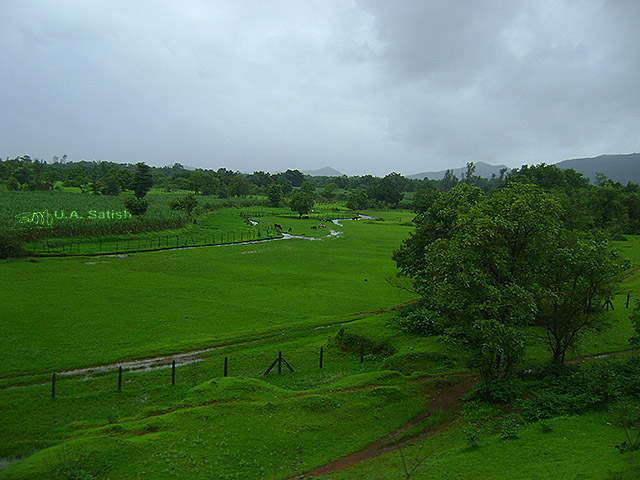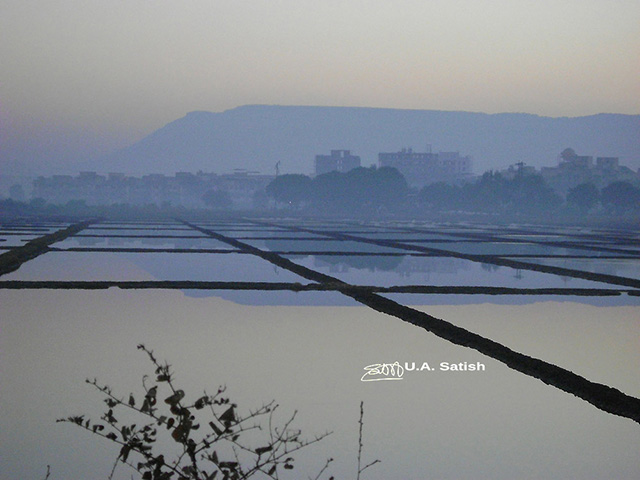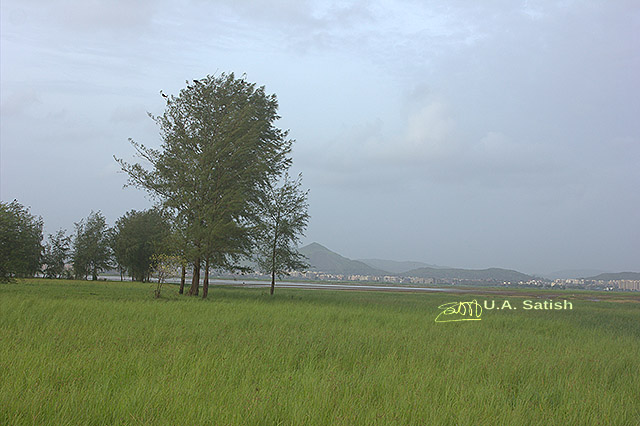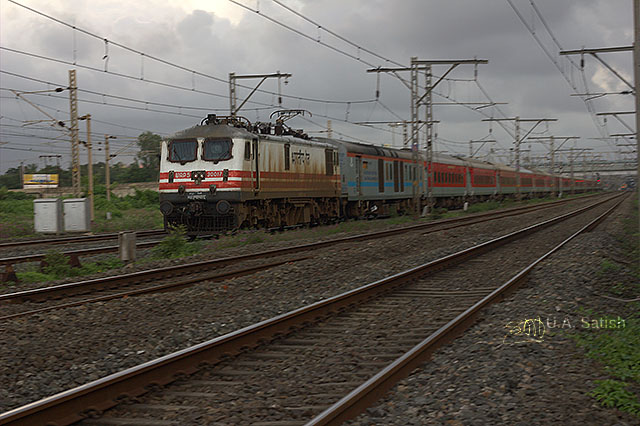Happy Onam

![]() Onam is the harvest festival of Kerala. It is celebrated in the Malayalam month of Chingam which follows the months of south-west monsoon. Today, 16 September 2013, is Thiruvonam. Happy Onam to all my Malayali friends!
Onam is the harvest festival of Kerala. It is celebrated in the Malayalam month of Chingam which follows the months of south-west monsoon. Today, 16 September 2013, is Thiruvonam. Happy Onam to all my Malayali friends!
This image I captured when I was travelling on Konkan Rail two months back, when the summer monsoon was at its peak. What was striking was that the whole countryside had been carpeted with green grass. The lush green carpet spread out as far as the eye could see. The train had stopped at a signal. So I was able to get down and take a few shots. Incidentally I used my Sony Cybershot point and shot camera.
 The image has more than 6600 views and close to 100 favourites on flickr. It has also made it to Flickr Explore. You may like to see it on my flickr page. The picture on right shows a few of my photos on Explore.
The image has more than 6600 views and close to 100 favourites on flickr. It has also made it to Flickr Explore. You may like to see it on my flickr page. The picture on right shows a few of my photos on Explore.
By the way, now you will be able to get my email newsletter and it will be through Google feedburner. Go to the Follow page on my site to see the mail subscription link.


